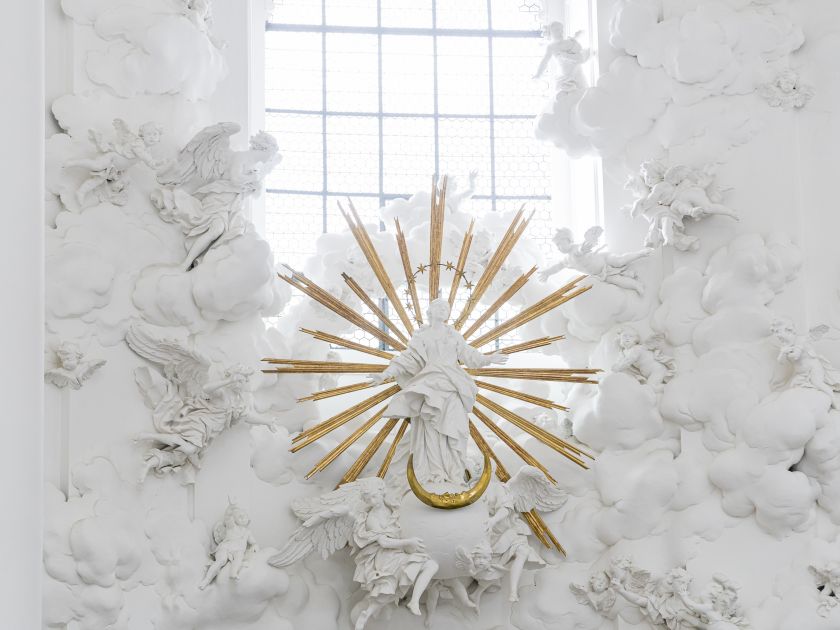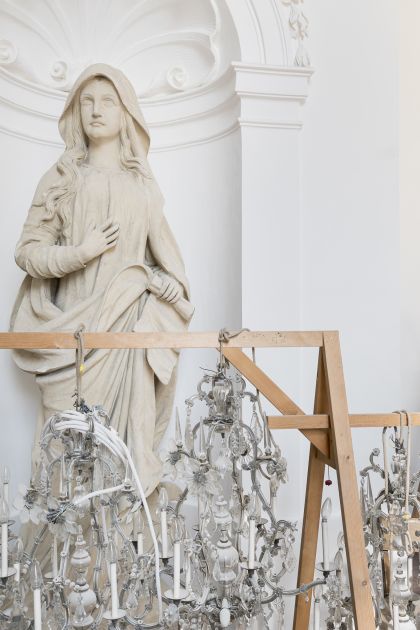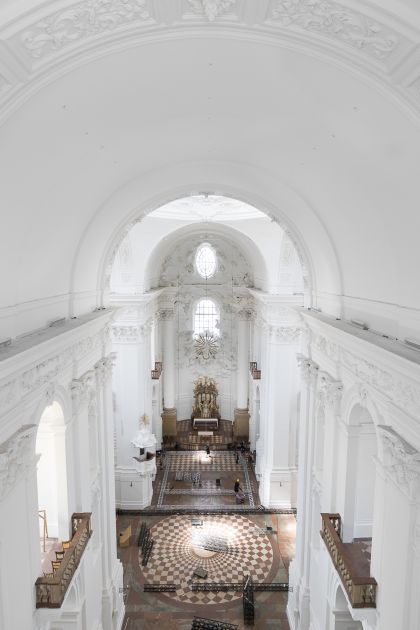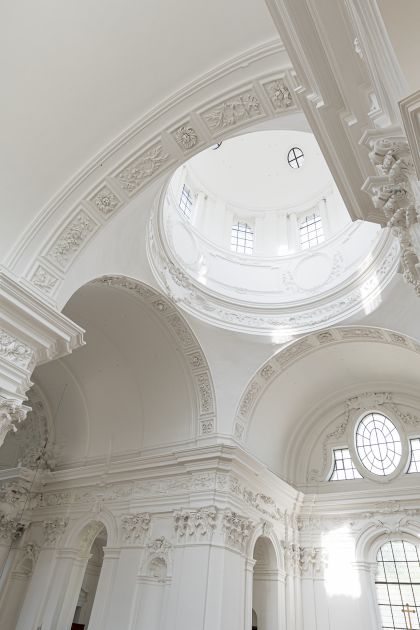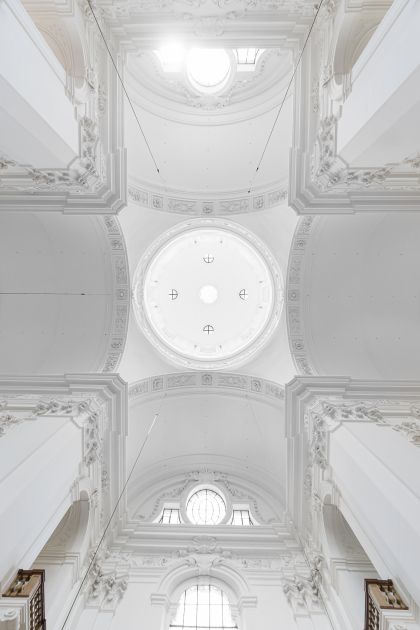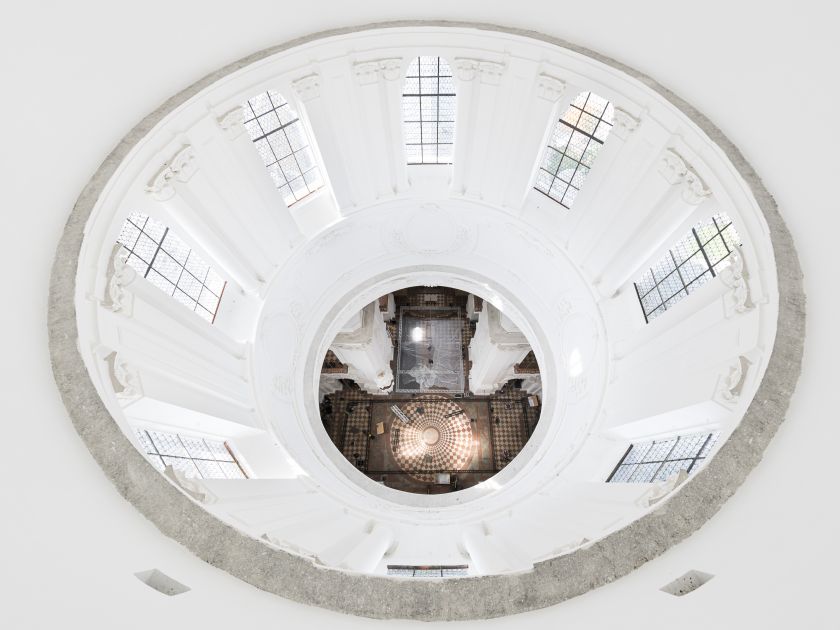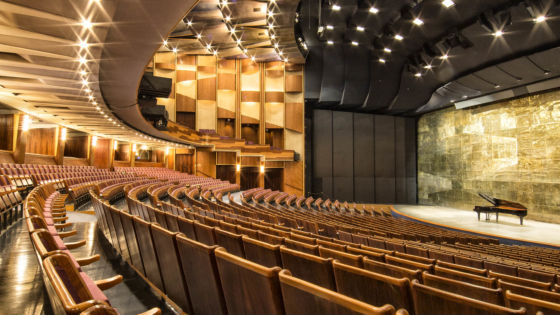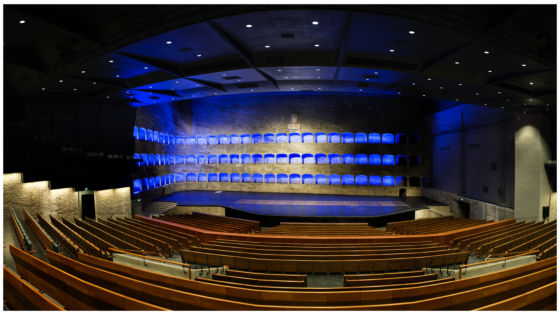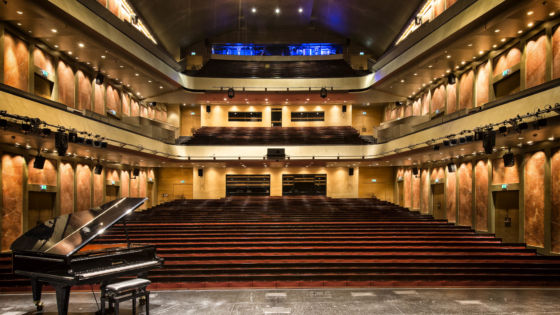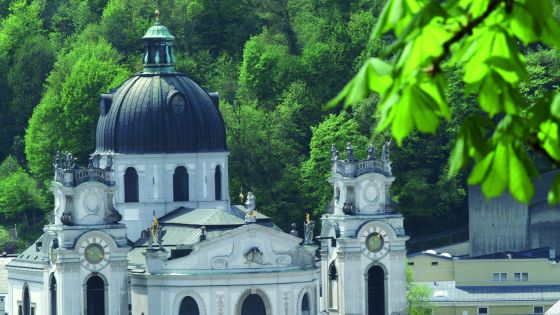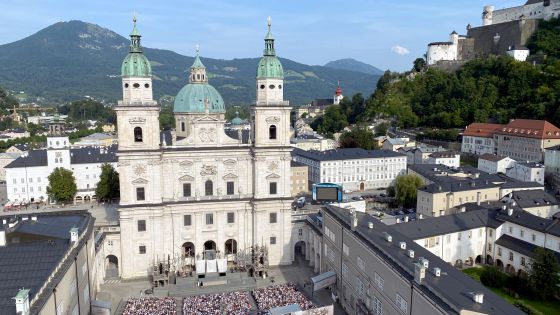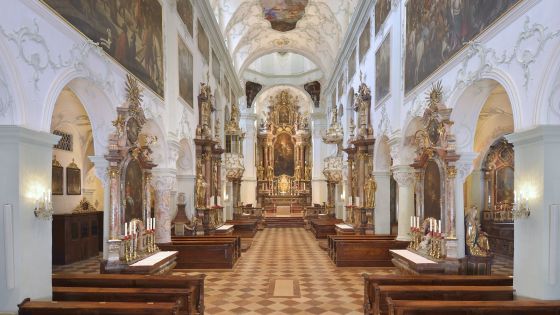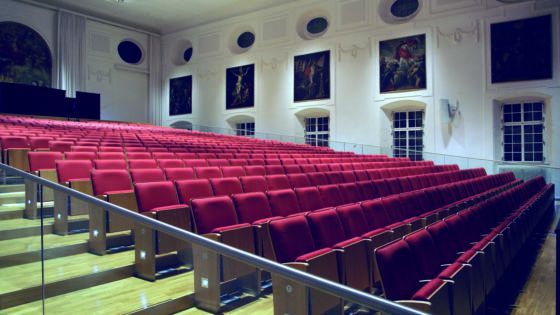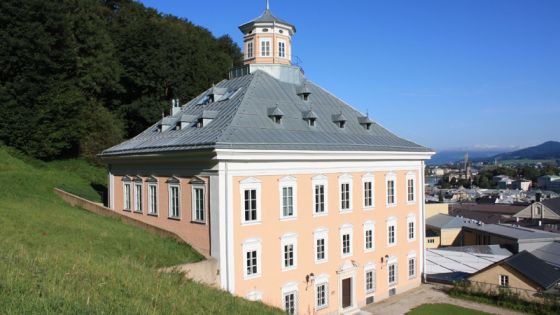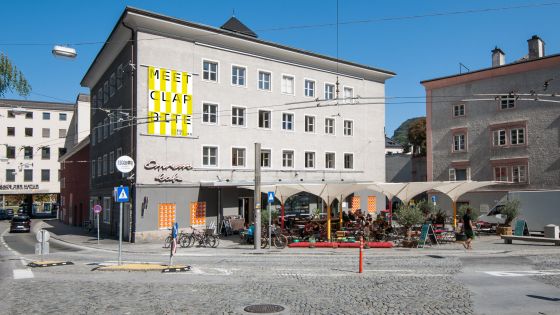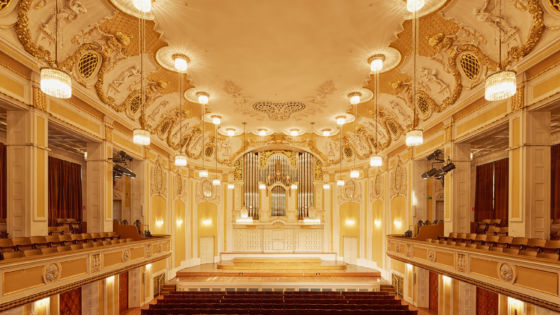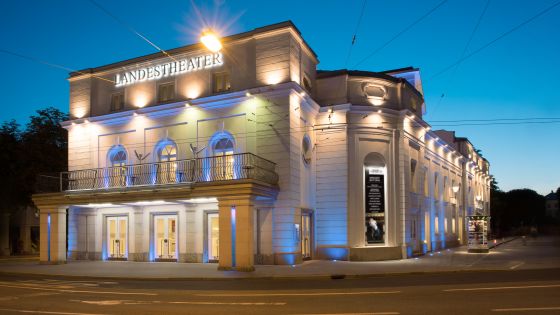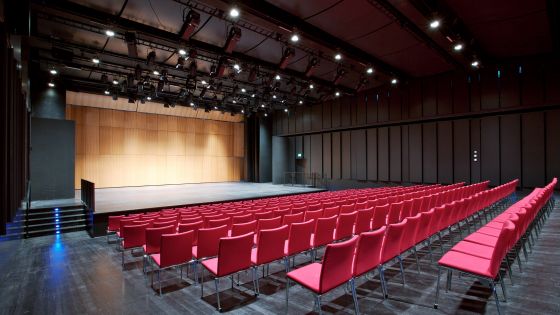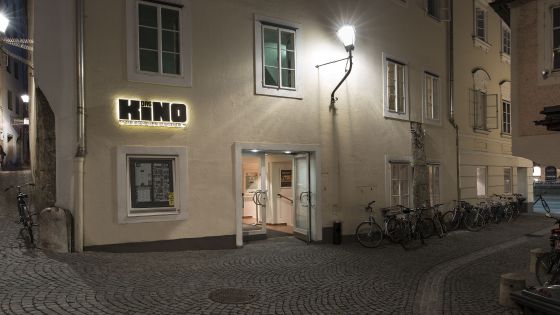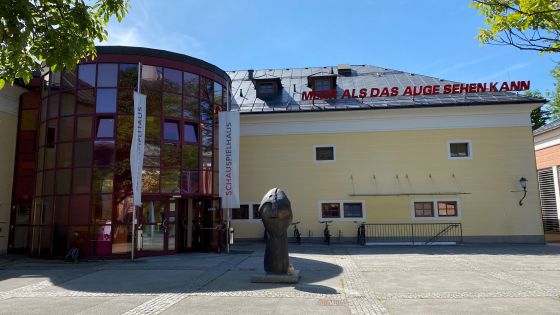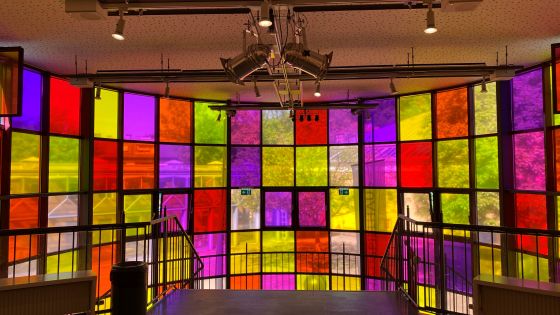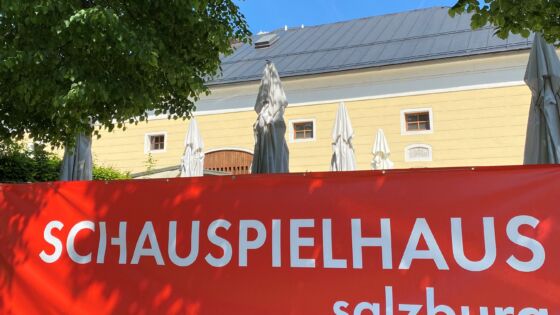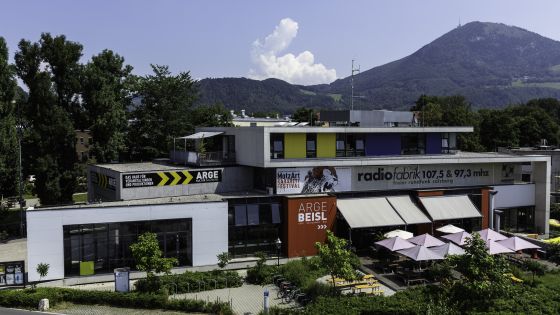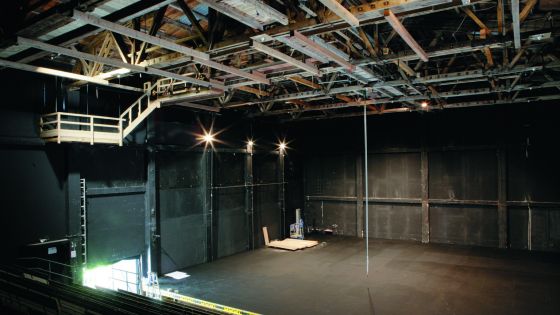Built between 1694 and 1707 as a university church, Salzburg owes the Kollegienkirche to the Baroque architect and sculptor Johann Bernhard Fischer von Erlach, who also designed the Holy Trinity Church and the Ursulinen Church in Salzburg. Max Reinhardt and Hugo von Hofmannsthal regarded the Kollegienkirche as the appropriate location for the production of their mystery play Das Salzburger Grosse Welttheater (The Great Salzburg World Theatre) in 1922. The church authorities allowed the performance to go ahead on condition that the church underwent restoration according to a schedule directly adjusted to the performance. Max Reinhardt waived his fee and Hugo von Hofmannsthal dedicated 50% of his royalties to the renovation and to the Festival House Community, so that ultimately the church was renovated with finance from Hofmannsthal’s royalties, funding from the Festival House Community and state subsidies, each contributor making up one third of the overall sum.
Nevertheless over the following years the Kollegienkirche was not used as a venue. Concerts of sacred music took place during the interwar years in the Cathedral and after 1945 in the Great Hall of the University. It was not until 1969 that a scenic performance again took place: Emilio de’ Cavalieri’s Rappresentazione di Anima e di Corpo in the adaptation by Bernhard Paumgartner. This was a kind of sacred opera that was first performed in 1600 in Rome and despite the fact that it was a spectacular production with small dance interludes it was well received by the cardinals. After Handel’s Jephtha (1984–1986) and Saul (1985), George Tabori’s interpretation of Franz Schmidt’s Das Buch mit sieben Siegeln was staged in 1987 in the Kollegienkirche. The highly controversial production was banned immediately after the premiere by order of the archbishop and the chancellor of the university, and it was then given only as a concert performance. From the 1970s the Kollegienkirche was repeatedly used for sacred and choral concerts of the Salzburg Festival.
From 1993 the Zeitfluss festival directed by Tomas Zierhofer-Kin and Markus Hinterhäuser revived the Kollegienkirche as a venue with works of contemporary music. Since 2007, when Markus Hinterhäuser took over the planning of the concert programme of the Salzburg Festival, the Kollegienkirche has become the central venue for the series known as Kontinente (Continents). In 2008, as part of this festival within a festival, Salvatore Sciarrino’s opera Luci mie traditrici was performed here in a highly acclaimed production directed and designed by the renowned visual artist Rebecca Horn.

